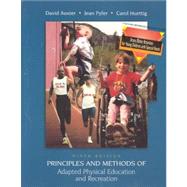| preface | xiii | ||||
| PART I The Scope | 1 | (30) | |||
|
2 | (29) | |||
|
4 | (1) | |||
|
4 | (1) | |||
|
4 | (1) | |||
|
4 | (1) | |||
|
5 | (2) | |||
|
7 | (3) | |||
|
10 | (1) | |||
|
11 | (4) | |||
|
15 | (2) | |||
|
17 | (2) | |||
|
l8 | ||||
|
19 | (1) | |||
|
20 | (1) | |||
|
20 | (2) | |||
|
22 | (1) | |||
|
23 | (8) | |||
| PART II Key Techniques | 31 | (260) | |||
|
32 | (37) | |||
|
33 | (1) | |||
|
34 | (1) | |||
|
34 | (3) | |||
|
37 | (2) | |||
|
39 | (13) | |||
|
52 | (10) | |||
|
62 | (7) | |||
|
69 | (49) | |||
|
72 | (1) | |||
|
72 | (11) | |||
|
83 | (2) | |||
|
85 | (1) | |||
|
86 | (1) | |||
|
87 | (2) | |||
|
89 | (3) | |||
|
92 | (1) | |||
|
93 | (1) | |||
|
93 | (7) | |||
|
100 | (2) | |||
|
102 | (16) | |||
|
118 | (36) | |||
|
119 | (2) | |||
|
121 | (1) | |||
|
121 | (24) | |||
|
145 | (2) | |||
|
147 | (2) | |||
|
149 | (1) | |||
|
150 | (1) | |||
|
151 | (3) | |||
|
154 | (69) | |||
|
155 | (2) | |||
|
157 | (5) | |||
|
162 | (1) | |||
|
163 | (3) | |||
|
166 | (10) | |||
|
176 | (1) | |||
|
177 | (14) | |||
|
191 | (32) | |||
|
223 | (27) | |||
|
225 | (19) | |||
|
244 | (1) | |||
|
245 | (5) | |||
|
250 | (41) | |||
|
251 | (1) | |||
|
252 | (2) | |||
|
254 | (5) | |||
|
259 | (1) | |||
|
260 | (6) | |||
|
266 | (16) | |||
|
282 | (2) | |||
|
284 | (7) | |||
| PART III Children and Youth at Risk | 291 | ||||
|
292 | (26) | |||
|
293 | (2) | |||
|
295 | (1) | |||
|
296 | (1) | |||
|
297 | (1) | |||
|
298 | (1) | |||
|
299 | (2) | |||
|
301 | (5) | |||
|
306 | (4) | |||
|
310 | (1) | |||
|
310 | (1) | |||
|
311 | (7) | |||
|
318 | ||||
|
320 | (1) | |||
|
321 | (4) | |||
|
325 | (3) | |||
|
328 | (1) | |||
|
329 | (5) | |||
|
334 | (4) | |||
|
338 | (1) | |||
|
339 | (1) | |||
|
340 | (3) | |||
|
343 | ||||
|








